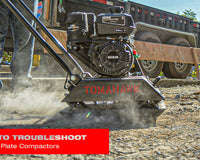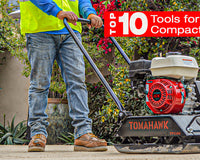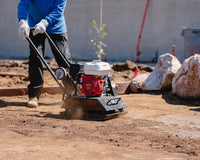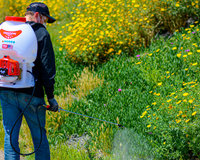Choosing the right gravel for your driveway isn’t simply a design decision—it affects durability, drainage, and long-term maintenance. Whether you live in a suburban neighborhood or manage a rural property, your gravel selection will impact how your driveway performs under daily use and changing weather conditions. This guide outlines the most popular gravel types and explores where tools like plate compactors or rammers can improve the longevity and stability of your installation.
Crushed Stone: Reliable for Load-Bearing Driveways
Crushed stone is a go-to choice for high-traffic driveways and sloped terrain. With sharp, angular edges, these stones lock together when compacted, offering structural strength and superior drainage. Sizes range from ¾ inch to 2 inches, with larger stones forming the base and smaller ones used for top layers.
Crushed stone requires thorough compaction to avoid settling. Using equipment like the Tomahawk 5.5 HP Honda Plate Compactor ensures a dense, stable surface, especially when layering multiple grades. Without compaction, crushed stone can shift under vehicle load, leading to ruts and potholes.
Pea Gravel: Aesthetic but Requires Restraint
Pea gravel features small, smooth, and rounded stones, often used where curb appeal is important. These stones come in various natural hues and offer a softer appearance underfoot. While ideal for garden paths or low-traffic residential driveways, their round shape makes them more mobile, increasing the risk of spread unless contained by edging.
For best performance, pea gravel should be applied over a firm sub-base of crushed rock and compacted to reduce movement. While pea gravel alone is not typically compacted, stabilizing the base layer with a vibratory rammer like the Tomahawk 3 HP Honda Vibratory Rammer Tamper adds the support needed to reduce displacement over time.
Decomposed Granite: Natural Look with Solid Performance
Decomposed granite (DG) is a finely crushed material that offers a rustic appearance and excellent permeability. When moistened and compacted, DG forms a semi-solid surface ideal for driveways with moderate traffic. Its earth-toned aesthetics also make it a popular choice for eco-conscious homeowners looking for a low-impact, natural finish.
DG performs best when installed in layers, each of which should be compacted with a plate compactor. The goal is to prevent erosion during storms or washouts. DG may require more frequent maintenance, but proper equipment during installation minimizes future upkeep.
Specialty Options: Marble Chips and Recycled Asphalt
For driveways that prioritize appearance, white marble chips offer a reflective, luxurious look. However, they’re prone to scattering and can be slippery when wet, making them less suitable for high-traffic use. On the opposite end of the spectrum, recycled asphalt millings present a cost-effective, sustainable option. They compact well and bind slightly when warm, creating a solid surface ideal for driveways.
Because recycled asphalt often includes fine and coarse material, effective compaction is critical. A mid-weight compactor such as the Tomahawk Plate Compactor works well to create a smooth, long-lasting surface.
Installation and Maintenance Best Practices
No matter the gravel type, layering and compacting are essential. Begin with a base of coarse material and top it with finer aggregate. Each layer should be compacted—preferably with powered equipment—before the next is applied. According to Home Questions Answered, “A well-compacted base not only supports the weight of vehicles but also helps prevent washouts and potholes over time” (Home Questions Answered, n.d.).
Regular maintenance such as regrading, weed control, and occasional top-dressing extends your driveway’s lifespan. Using proper equipment during both installation and maintenance phases saves time and reduces the risk of surface degradation.
Ultimately, selecting the right gravel involves more than picking what looks best. By understanding each option’s strengths and weaknesses—and supporting them with the right tools—you can build a driveway that’s functional, attractive, and built to last.









